This is how I make compost, today. Each morning, I take the “chicken bucket” from the kitchen down to the chickens. The chicken bucket is what we use to hold kitchen scraps: banana peels, bits of onion, coffee grounds, ribs of kale leaves, egg shells, even detritus such as sweepings from the floor and fingernail clippings. It is everything that we discard that will decompose within my lifetime.
Along my walk to the chickens, carrying the chicken bucket, I pass through the vegetable garden and do a morning harvest. If I harvest a head of lettuce, then I cut off the lower and outside leaves that are dirty and ugly and put them into the chicken bucket. (I put the head of lettuce into a second, clean bucket.) If there were any earwigs or snails hiding in the lettuce, then those go into the chicken bucket too. If I harvest a head of cauliflower, then I cut the plant at ground level and the entire plant except for the head goes into the chicken bucket. If I harvest tomatoes, then any fruit that is badly cracked goes into the chicken bucket, and so on.
I continue southward, toward the chickens, looking for weeds that don’t have seeds. I fill any remaining space in the chicken bucket with such plants. Depending on the time of year, this might be thistles, winter grasses or Bermuda grass, mallow, capeweed – any plant that is not growing in the right place and that does not have seeds, but especially those that the chickens like to eat. (Brassica leaves with aphids on them are their absolute favorite.) I always carry a knife or sickle saw to cut and collect these.
Then I finally reach the chickens, and I dump.
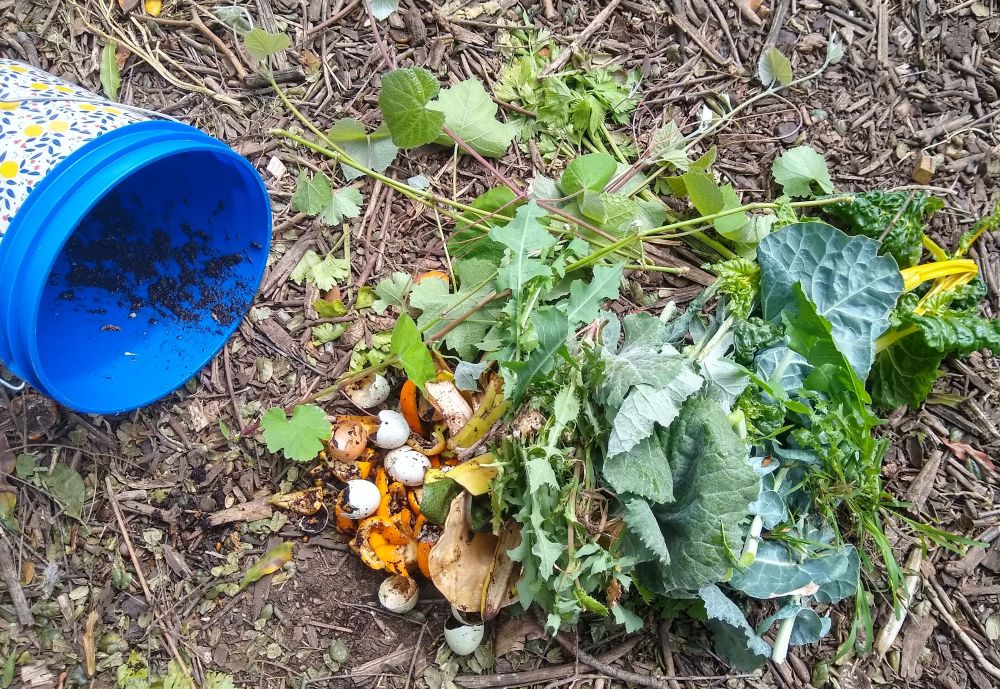
When someone asks me how I make compost I say, “I don’t. My chickens do.”
I’m not trying to be funny or evasive. I really feel like I don’t make compost these days. I just put a bunch of material in front of my chickens, and out the other end I collect compost.
Here specifically is how I choreograph their compost making. Within a fenced area where my chickens spend most of each day and night, I applied a layer of wood chips two feet deep. This was a few years ago. I now only add wood chips when the need arises – that is, when the odor arises. If I get a whiff of manure, I take that as a sign to add wood chips. Below the layer of wood chips is dirt, earth. The chicken bucket contents are dumped onto this.
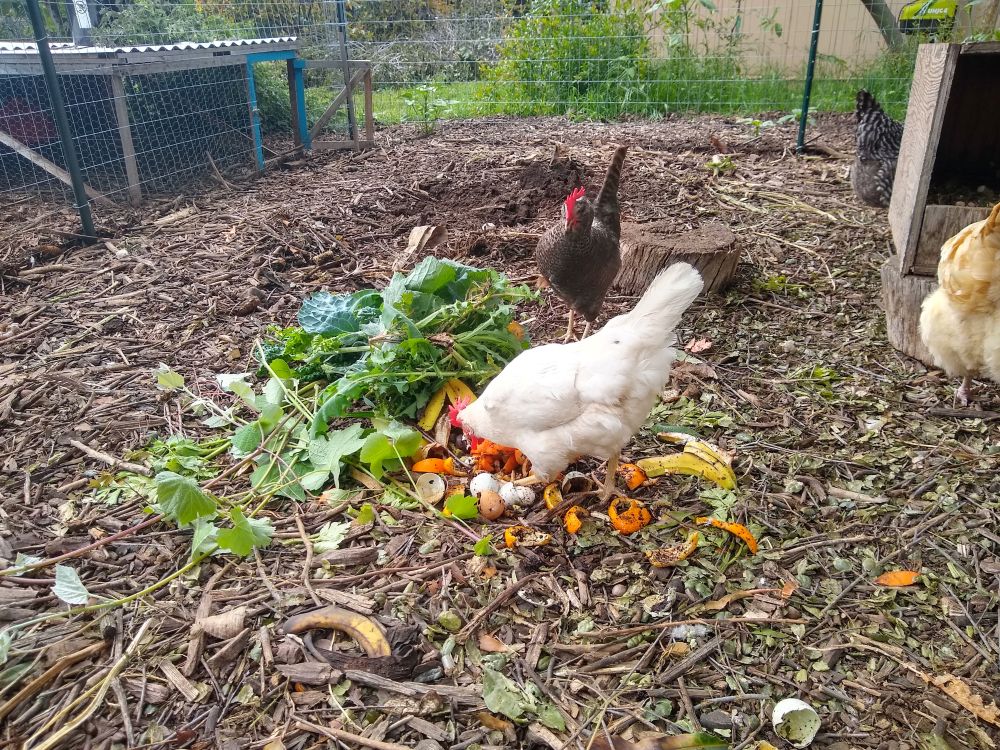
After the morning dump, throughout the day, the chickens make the contents of the chicken bucket disappear. First they eagerly seek out and eat pieces of cheese or grains of rice or meat left on a bone. Then they peck at leaves. Next they scratch and spread the contents in search of hidden treasures. Later in the day, you’ll see them pecking at egg shells and continuing to peck at some leaves. By the end of the day, they’ve eaten or scratched and spread the contents so much that barely any vestige remains.
The only items that I can still see after a few days are things like woody sunflower heads (after all the seeds have been pecked out), bones, or corn stalks.
All other items disappear through the chickens’ digestive system or within the floor of wood chips and previous chicken bucket dumps.
In other words, the chicken bucket contents turn into chicken manure or are eventually decomposed by all the small creatures that live in the wood chips and plant materials and dirt layer below the chickens. These small creatures include worms, beetles, fungi, and bacteria.
Harvesting
If it’s going on fruit trees, then I harvest into a wheelbarrow and take the compost to the trees and spread.
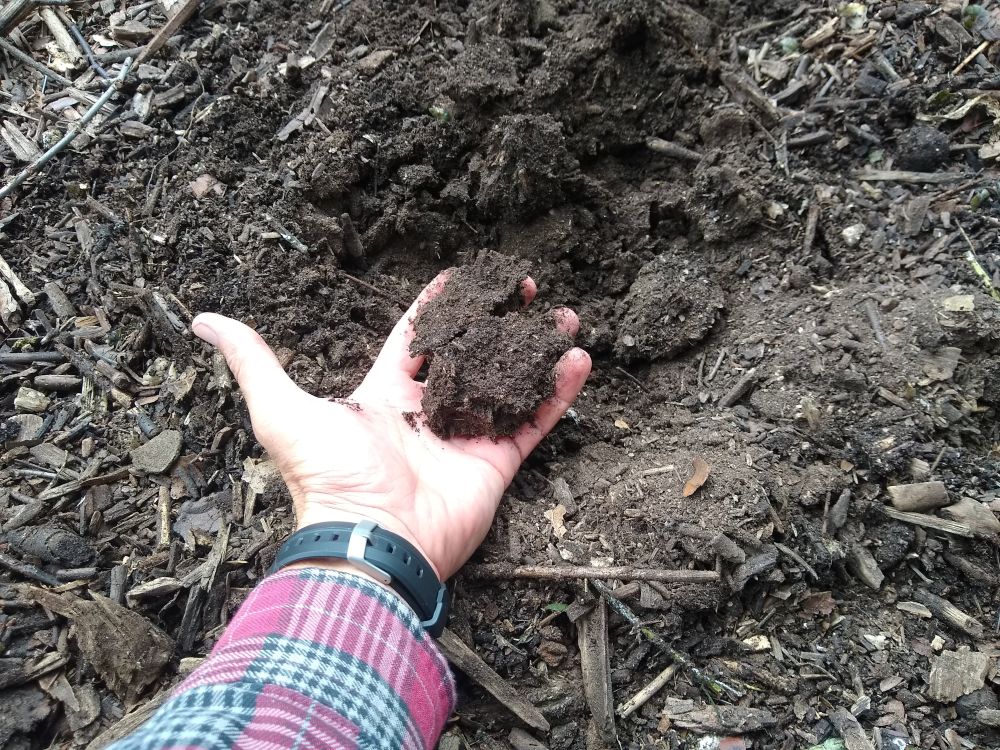
If it’s going to be used on vegetables, then I harvest the compost into buckets.
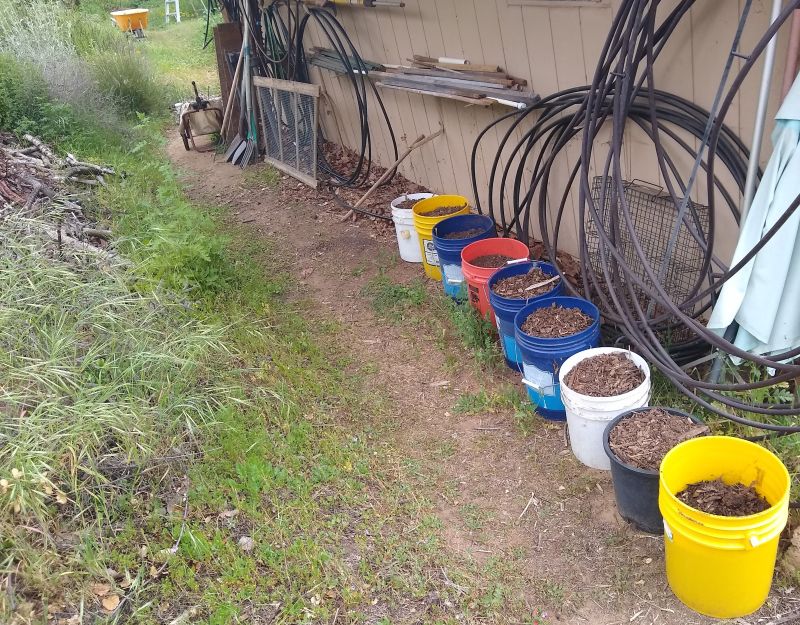
I keep a queue of buckets of compost behind my barn. They are aging in order, from youngest to oldest.
I let them sit in place for a month or two so that the compost doesn’t burn plants. I found that if I used the compost immediately after harvest, then some seedlings in containers would germinate poorly and grow in a stunted and disfigured manner. My assumption is that this was due to the manure within being too fresh. But after a month or two of rest, the compost can be used anywhere, including as a potting mix.
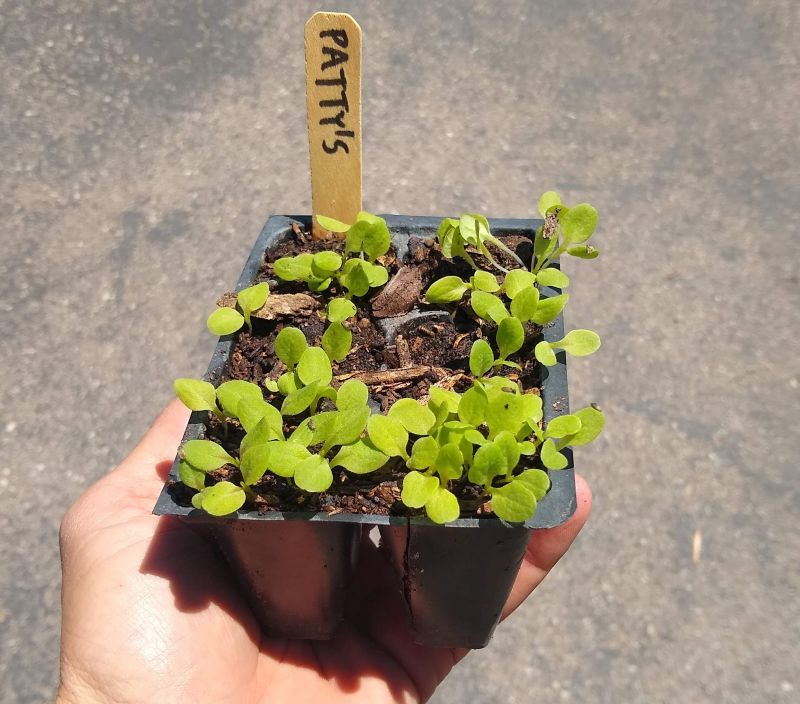
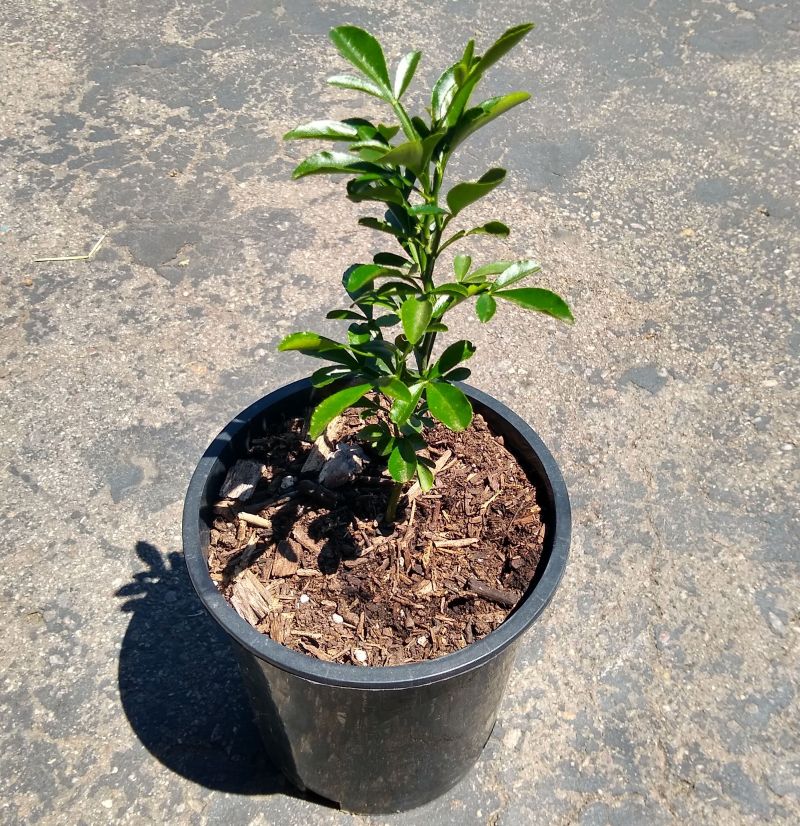
I’ve always loved making compost, and over the years I’ve made it with a hundred different ingredients and in diverse ways. For some examples, see my post “Simple composting.”
The reasons I make compost in the above way nowadays are that it’s easier than turning piles by hand, it’s faster than using static piles, and my family eats many eggs so we keep chickens.
I also like feeling that my home has a cycle of resources: I grow fruits and vegetables; the peels and pits go to the chickens; they eat or help decompose; I harvest the compost and put it back under new vegetables and fruit trees. Repeat.
So this is how I make compost. And this is how I make compost, today.
The other day I was reading my copy of the best composting book, The Complete Book of Composting by J.I. Rodale.
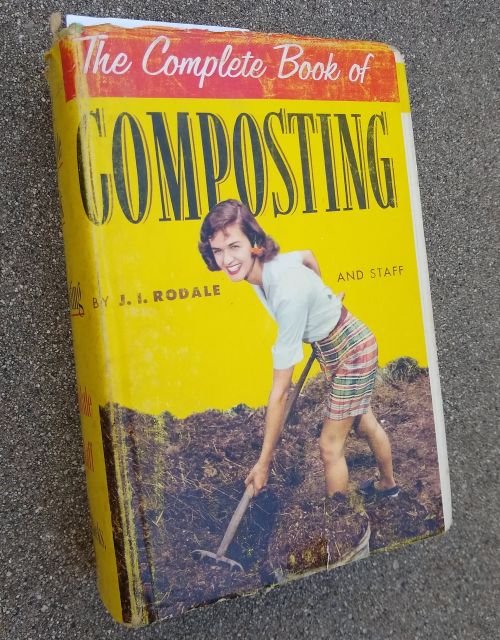
Published in 1960, this 1,007 page tome includes an anecdote about a farmer named A.H. Anthony, who “made a fortune in the sheep business in Wyoming and lost it in oil in California.” After this loss, Anthony started anew in 1922 by purchasing land to grow avocados near Fallbrook with the little money he had left.
He developed a routine treatment of the soil in his avocado grove. Once each year around each tree he applied a layer of chicken manure, then a layer of straw, and then a layer of chipped tree prunings. In essence, he was making a three-layer compost pile around each tree, year after year, composed of both animal manure and plant materials.
J.I. Rodale visited the grove and said that under this thick decomposing mulch, “when the top inch or so of black humus is gently raked aside, thousands of tiny feeder roots can be seen honeycombing every inch of soil.”
That sounds like the description of a healthy root system under an avocado tree. But even more importantly, Rodale said that, according to official Calavo records, Anthony’s 60 acres were the “highest yielding and highest paying avocado grove in California.”
There are no ads on my Yard Posts because of your support. Thanks!
All of my Yard Posts are listed here.

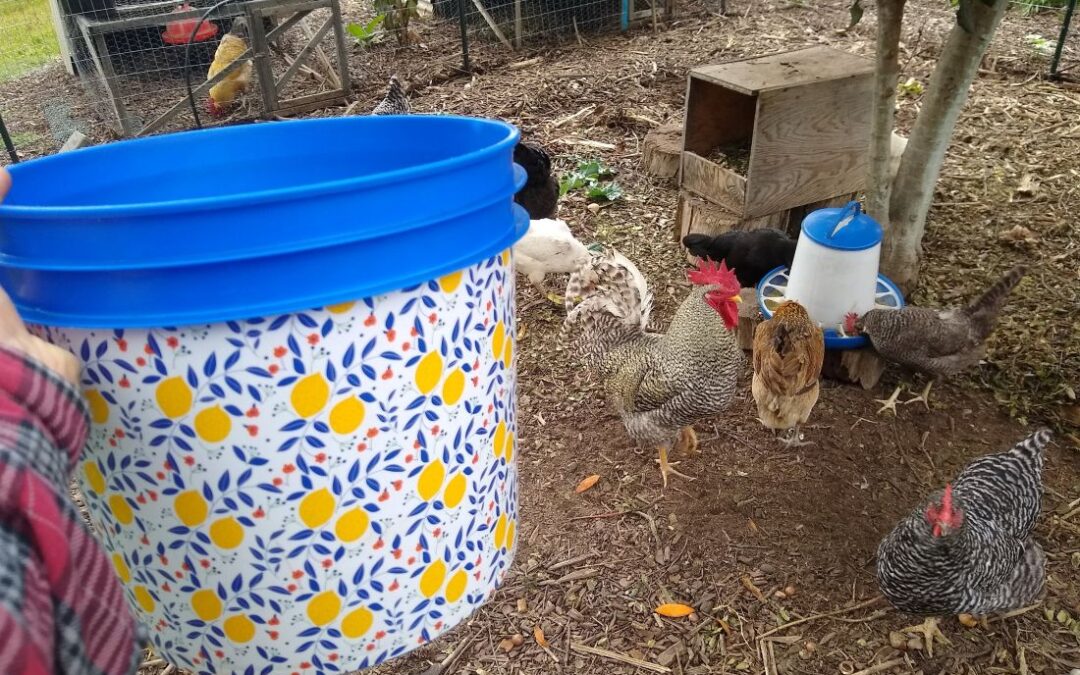

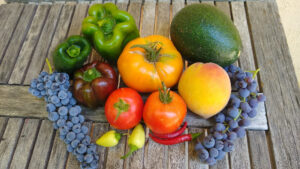
HI Greg: This is such a great article. I forwarded it to Joyce Vance (former U.S. Attorney who has a newsletter, Civil Discourse). She loves her chickens and might want to make compost if she doesn’t already do so. Your posts are really good. Thanks for writing them. By the way, last week I was talking with a pro fruit tree arborist who echoed what you wrote about using chicken manure with avocados.
Thank you, Janet. I have heard many people say that even if they didn’t eat eggs, they would keep chickens just for the chickens’ compost-making services. I probably would too.
Hi Greg. Do you add water to your chicken yard? I’ve tried composting with chickens a bit, but always end up with just a pile of dried vegetable matter and wood chips. But then again it was with a much smaller area and not as deep, so maybe with yours piled that thick it retains enough moisture?
Hi John,
Yes, glad you brought this up. My chicken yard is under a macadamia nut tree. Therefore, it gets some shade, and every few weeks in the summer I set a sprinkler in there and water thoroughly in order to satisfy the tree’s need, which also aids in the composting process of the materials below the tree.
Bravo Greg! As usual, a great article! Thanks for your good ideas and practical wisdom. I especially enjoyed the last anecdote about J.I. Rodale. Fascinating stuff!
Thanks Greg: you give us such great information!. 2 foot Thich wood chips in the coop, really?
Hi Tom,
Thanks! Does two feet sound like a lot? It rapidly settles and then decomposes to where you have to add more before long. But then it reaches a stability after around a couple years to where now I don’t have to add wood chips and other plant material as often.
Thanks so much for taking the time to write this article!! I want to continue to learn from you, and this information will help me so much, and my chickens will receive even more scraps!
Greg, I do have a question about your chicken yard. I don’t have bark available on my property, so I purchase straw and use this in my chicken yard. Do you think that bark is better, and what kind of bark do you purchase, if you do indeed purchase it? Thanks, Laurie
Hi Laurie,
Straw is great. I use it also to a small degree when I grow some wheat or oats and throw the entire plants into my chicken yard.
I don’t use just bark; I use entire trees that have been chopped up. So it’s bark and wood from trunks and branches of all diameters, plus all the leaves. I like this resource because each part of a tree has different components and rates of decomposition.
I get this resource from my own small chipper and free from local tree trimmers.
Thanks Greg!